What France's stolen masterpieces tell us
- Published
Five well-known masterpieces, by Picasso, Matisse and other great artists, have been stolen from the Museum of Modern Art in Paris.
If you wanted to start a modern art museum, these paintings would be high on your list of acquisitions as between them they tell the story of modern art's emergence, as the BBC arts editor Will Gompertz explains here.
PASTORAL BY HENRI MATISSE (1906)
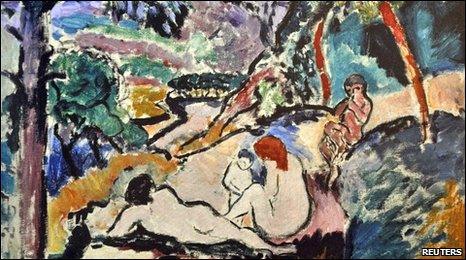
Pastoral painted by Henri Matisse in 1906
Henri Matisse's Pastoral has the hallmarks of the Impressionists - painted outside or "en plein air", with loose brush strokes and an everyday, realistic subject.
What marks it out from the work of the early Impressionists is the bright, unnatural colours, which he has used to express the scene as he sees and feels it.
This was called Fauvism.
OLIVE TREE NEAR L'ESTAQUE - GEORGES BRAQUE (1906)
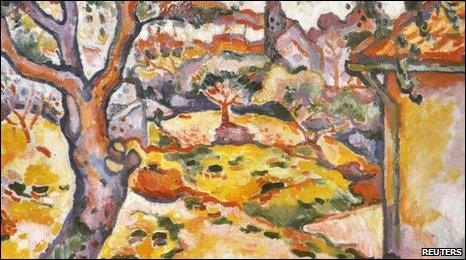
Olive Tree near l'Estaque painted by Georges Braque in 1906
Georges Braque was inspired by the work of Matisse and developed his own Fauvist style which can be seen in the painting Olive Tree Near L'Estaque.
What is of particular interest about this work is the date Braque painted it - 1906.
That is the year Paul Cezanne died, and it was his later paintings that inspired Braque to develop one of modern art's most famous movements.
By 1907, Braque was painting similar scenes but his style had changed.
Together with Picasso they had started to define Cubism.
DOVE WITH GREEN PEAS - PABLO PICASSO (1911)
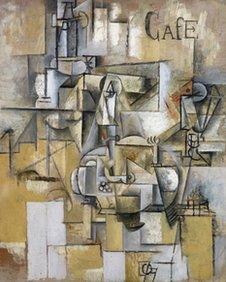
Dove with Green Peas painted by Pablo Picasso in 1911
Picasso's Dove with Peas makes sense as the next painting to have, as it is a classic example of Cubism in its pomp.
By this stage Braque and Picasso had been joined by Fernand Leger as the other great exponent of Cubist art and techniques.
But Leger became disillusioned with the increasingly abstract nature of the Cubists' work.
During World War I, he chose to renounce abstraction and instead focus on painting common objects in bold colours.
STILL LIFE WITH CANDLESTICK - FERNAND LEGER (1922)
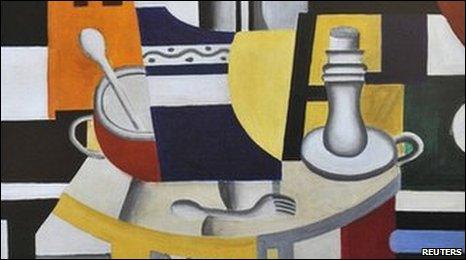
Still Life with Candlestick painted by Fernand Leger in 1922
As you can see in the next painting that was stolen - Still Life with Candlestick - Leger has retained the influence of Cubism while incorporating the saturated colours of the Fauves.
But by combining the two and adding his artistic developments the work moves towards modernism.
Woman with Fan - Amedeo Modigliani (1919)
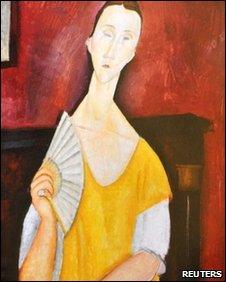
Woman with Fan painted by Amedeo Modigliani in 1919
Amedeo Modigliani was the fifth artist to be targeted by the thieves.
They chose a work he painted in 1919, Woman with Fan.
He died a year later at the age of 35, having contracted tuberculosis.
Modigliani's portrait of his friend shows him using restrained colours out of respect for her and using "S" shapes to accentuate her graceful pose.
As Matisse used colour to express his feelings for his subject, so Modigliani used distortion.
Both fit within the expressionist movement inspired by the work of Vincent Van Gogh.
- Published21 May 2010
- Published20 May 2010